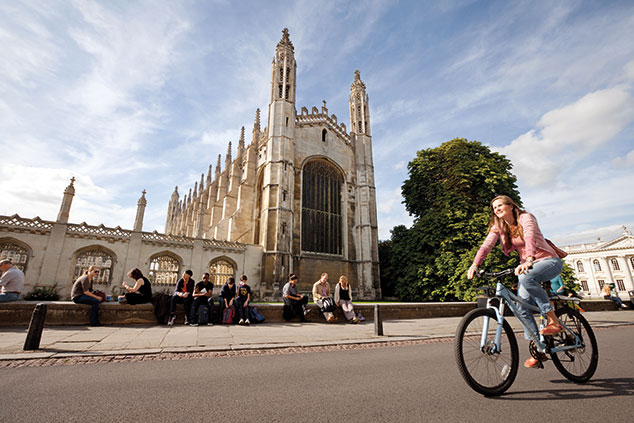
Are universities fighting for students?
Yes, and increasingly so. Data from Ucas, the university admission service, shows that this year 23% of school leavers held at least one unconditional offer, meaning that their university place was secure regardless of their final A-level grades. That marks a 32% rise in one year and a staggering increase since 2013, when just 1% of students held such offers.
In times past, students who missed their university offers on A-level results day would turn to clearing to secure any leftover places. But whereas clearing was once a scramble for courses, it is now universities doing the scrambling. More than 26,000 courses were available through clearing in England alone this year, with even prestigious universities offering up unfilled places. Sheffield, for example, has doubled its clearing intake of students since 2015.
What else are universities doing?
Recent years have also brought reports of universities dangling incentives in front of prospective students. From free flights home for those achieving good A-level grades at Queen’s University Belfast, to free laptops at Coventry University and a spate of “scholarships” that sometimes look more like small cash bribes, higher education has clearly become a buyer’s market. Portsmouth University has even been sponsoring the local football team’s shirts this year in a bid for publicity.
Are students getting cold feet?
The proportion of English 18-year-olds applying to university is now at 37.8%, a record high. However, there was a 2% fall in university applications this year. Although that can be ascribed to a shrinking population of 18-year-olds, it could prove the start of a longer-term trend. The sector remains dogged by concerns that a profoundly internet-orientated generation will opt to trade in the prospect of tens of thousands of pounds of debt that two-thirds will never pay off for work experience and online education.
The rise of MOOCs – Massive Open Online Courses – is one alternative. And many school leavers will have noticed that several big companies, notably Apple, Google and IBM, have ditched their insistence that graduates hold a university degree. A recent Ipsos Mori poll showed that 75% of English and Welsh pupils agree that it is “important” to go to university, down from 86% five years ago.
What’s happening on the supply side?
In the past decade there have been two major changes that have profoundly reshaped higher education. The first was the tripling of fees in 2012. High fees quickly became a mark of prestige, prompting almost all universities to charge the maximum. Then in 2015 the government lifted the cap on student numbers. The change led to an explosion in the supply of university courses, triggering the current bonanza of unconditional offers and freebies.
So what happens next?
If the British higher-education sector is to continue thriving it may need to look overseas. The number of non-EU applicants rose by 8% this year to a record high. That is testament to the fact that, whatever the domestic quibbles, a UK higher education retains huge prestige internationally. UK universities currently run 39 foreign campuses in the likes of China, Dubai and Malaysia. They educate about 1.1 million foreign students a year in addition to 1.9 million home ones.
Yet there is a risk that the rush to expand could dilute the brands. As City AM’s Rachel Cunliffe notes, universities have every incentive to award top honours – it keeps their graduates happy and could give them an edge on the job market. The result is that at top British universities as many as 25% of students now obtain first-class degrees. The problem? If “employers cotton on” then “the value of degrees from that institution falls”.
Whose fault is all this?
Ultimately, the government’s: it has designed a system whereby we have a monopoly provider of tertiary education – the universities – who can only charge up to a certain amount. As Sheffield’s vice-chancellor, Keith Burnett, says in the Financial Times, what we are seeing is “a reasonable response by the sector to a sustained political push to produce ever more graduates… The approach to admissions we see today is exactly what you would expect given the market in higher education the politicians have created for us.”
How did we get here?
Successive governments have said they want more and more school leavers to get degrees. Some 49% of people under 30 are expected to enter higher education at some point. The idea is that people will earn more if they have a degree. Yet while the “graduate premium” is real enough as an average, Robert Halfon, chair of the Education Select Committee, points out that the premium “varies wildly according to subject and institution. For many, the returns are paltry”. A fifth to a third of graduates take non-graduate jobs.
And there isn’t an automatic link between a country’s proportion of school leavers going to university and its economic prowess. As David Matthews notes in Times Higher Education, in Switzerland – one of the world’s richest societies – “just under 28% of Swiss aged under 25” enter theoretical university courses, the lowest rate in the OECD club of developed nations.
The majority pass through a high-quality vocational education system that offers career-specific training and ensures low unemployment rates. Many who take the vocational track have better career prospects than their academic peers. Take Sergio Ermotti, who “began his career with an apprenticeship at a local bank” and skipped higher education. Today he is the CEO of UBS.